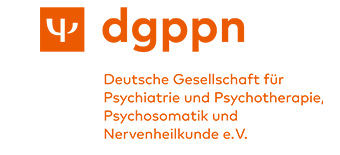[...] and was also very unsure, as soon as I went outside the door, I no longer felt good.
Please note that health information can only support the conversation with a psychotherapist or physician: It should never be a substitute for it!
What is agoraphobia with panic disorder?
Everybody has fears. Fears are a useful and important reaction, which warn us about threatening situations. A panic disorder, however, is a serious illness which can strongly impair the private and professional life of the sufferer.
For instance, people with a panic disorder can have anxiety attacks, for example chest pain, trembling, shortness of breath, dizziness, nausea, sweating or hot flushes. They are afraid of losing control of themselves, going mad or dying. Due to the physical burdens, many of them go to the doctor or the emergency room. However, a physical cause for the attack cannot be detected.
If a person has several panic attacks over the period of one month, one speaks of a panic disorder.
The term "agoraphobia" (from ancient Greek) can be literally translated as "fear of spaces". The sufferer is afraid to leave his home, be in public spaces, go into department stores or shops, be in crowds of people, cinemas or small enclosed spaces, or to travel alone by train, bus or plane. Therefore, he avoids these places or can only remain there with great fear. Panic attacks and agoraphobia frequently occur together. The diagnosis is then "agoraphobia with panic disorder".
How frequent are agoraphobia and panic disorder?
Panic disorder and agoraphobia are among the most frequent mental illnesses. Five out of 100 people suffer from one of these disorders at least once in their lives.
In Germany, around 1.5 million people are affected by agoraphobia or panic disorder, with women being twice as frequently affected as men. This disorder most often occurs for the first time in young adulthood.
Are there different forms or progressions?
In many cases, panic attacks occur first of all. After that, people are afraid of not being able to leave certain places if they have a panic attack, such as a bus, a full department store or a driving car. From this "fear of fear", agoraphobia can then develop.
Without therapeutic help, agoraphobia and panic disorders very rarely disappear. However, if they are professionally treated, the prospects of success are good. In many cases, the patients also suffer from another mental illness. Other anxiety disorders, depression, somatoform disorders and alcohol or drug abuse are the most frequent additional disorders.
How do agoraphobia and panic disorders emerge?
For the onset of the disease several factors are usually necessary. On the biological side, there are genetic predispositions (heredity), which increase the risk of a panic disorder.
Certain styles of thinking, assumptions or behavior (e.g. a particularly marked observation of one's own body signals) can also be partly responsible. Once a panic attack has occurred out of the blue, the sufferers often get great fear of a new attack and watch their body exactly - a vicious cycle starts, as so normal body sensations (e.g. heart rate) are perceived much more intense. Situations where panic attacks have occurred, are often avoided increasingly. An additional agoraphobia may result.
Around 80 out of 100 patients report, moreover, that they had to cope with a severe blow of fate shortly before their anxiety disorder (e.g. the death of a loved one or a separation). Positive but demanding events (e.g. a new job or a birth of a child) can also be triggers. Finally, long-lasting stresses (e.g. continuous workload, caring for a relative) can also contribute to agoraphobia or a panic disorder. People who had serious experiences in childhood (e.g. death, illness, alcohol abuse in the family) also appear to be more prone to panic disorders.
How do you find out if you have an agoraphobia or a panic disorder?
If individual indicators suggest an agoraphobia or a panic disorder, a doctor or psychotherapist should be sought.
In a discussion, he will then ask you about individual burdens, your general state of health, family history and physical illnesses, and will check whether you have an agoraphobia and/or a panic disorder. Questionnaires help the therapist to assess the severity of the illness and to clarify whether other psychological problems might be a possible cause. A physical examination can clarify whether the symptoms have physical causes (such as hyperthyroidism).
How will agoraphobia and panic disorders be treated?
Who ever receives treatment for agoraphobia and panic disorders has good chances of being cured. The following treatments are possible:
In deciding for one of the treatments, it is important to consider individual preferences. If one of the two treatments did not help, it is recommended to try the other. A combination of cognitive behavioral therapy and antidepressants is also possible - especially in cases of severe symptoms.
Among the different types of psychotherapy cognitive behavioral therapy has proven to be particularly effective at agoraphobia and panic disorders. In this therapy, thought patterns are called into question and worked on, and the patient is supported in actively confronting his anxiety. For psychodynamic therapy there are fewer studies. But if someone prefers a psychodynamic therapy, cognitive behavioral therapy was not helpful or is not available, psychodynamic therapy may also be offered.
Some doctors initially prescribe sedatives (so-called benzodiazepines). Benzodiazepines reduce fears very quickly, but can be addictive and are therefore not recommended. Benzodiazepines should only be prescribed in exceptional cases (e.g. severe heart diseases, when antidepressants are not suitable or in case of suicidal tendencies) and only for a short time.
What can friends and family do?
Attachment persons are directly affected, as joint undertakings with the anxiety patient, such as travelling and going to the cinema, are often not possible.
At the same time, they do a lot to help the sufferer master his everyday life. For example, they accompany him on the bus or when out shopping. Such help is meant well and is also a relief for the sufferer in the short term. However, in the long term it contributes to maintaining the illness.
Family members should therefore be well informed about agoraphobia or panic disorders to enable them to better understand the patient and his illness. This also helps during a psychotherapy, in which behavioural patterns can change and this has an effect on the mutual life.
And above all: Family members should not restrict themselves too much. If the anxiety disorder of the partner, family member or friend is too much of a burden, family members can also get help from self-help groups, advice centres, physicians or psychotherapists.



![Mental [m]illnesses[/m]](/cache/com_pagebuilder/d6f7840e5d4b24df08ab5554d6ea6cf3.jpg)


